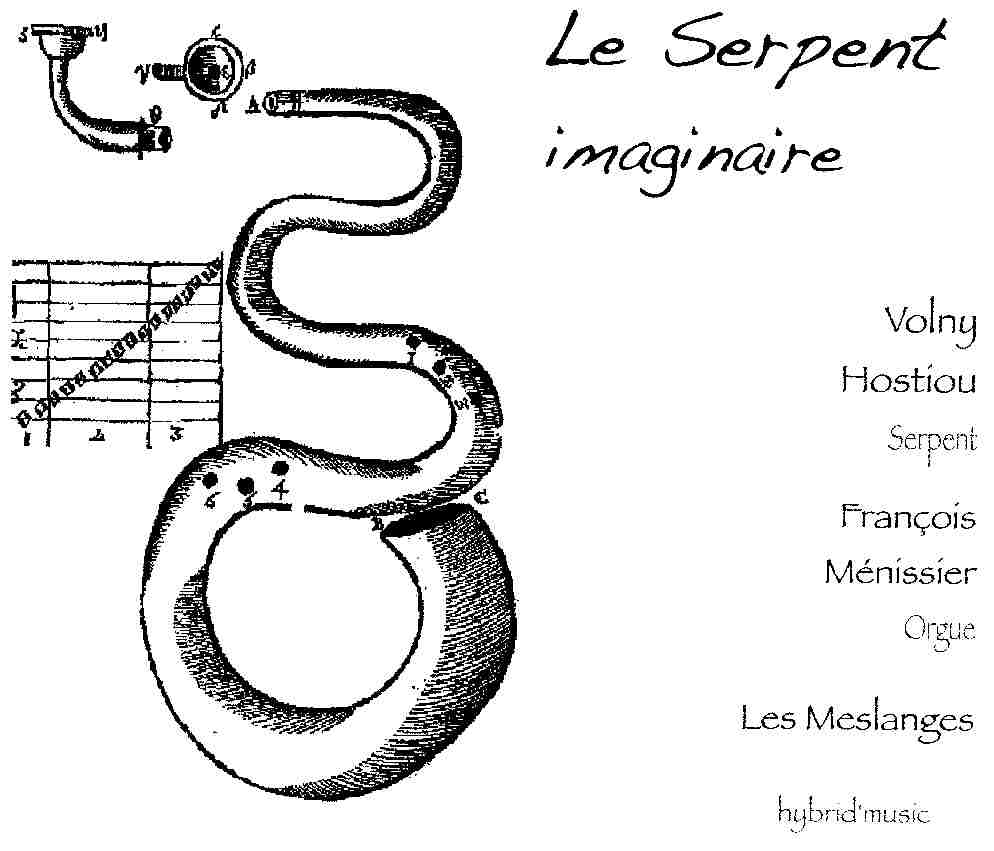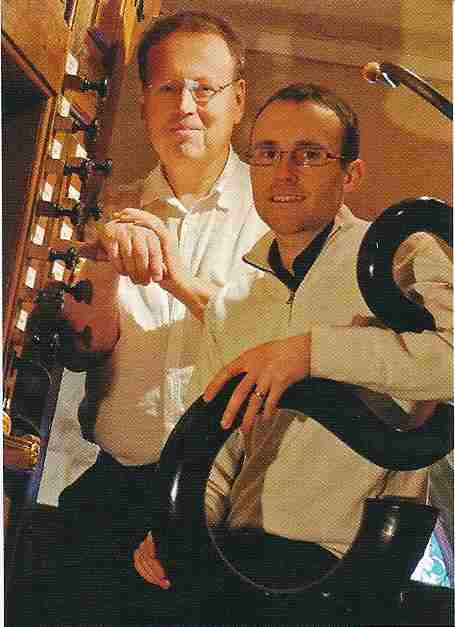

Volny Hostiou, Le Serpent Imaginaire, Hybrid Music (H1827), Recorded 23-29 July, 2011.
With Fançois Ménissier, organ; Eva Godard, cornetti; Thomas van Essen, baryton
With this solo recording, Volny Hostiou joins the ranks a small band of word-class serpentists active today. He is not only a great virtuoso on his instrument, but a noted scholar as well. While little specific solo repertoire exists, Hostiou has created an interesting program based on our knowledge of the traditional role of the serpent and serpentists ability to be great improvisers. So this CD program consists of an “imaginary solo repertoire” for bass and tenor serpents from the Renaissance to the mid-seventeenth Century. As Hostiou explains in his excellent CD notes, “the serpents plays, in turn, the role of singer, voices of keyboard pieces.”
Volny Hostiou plays on a copy of an original anonymous serpent housed in the Musée de la Musique in Paris (E.2204) made by Wetterberger. He is joined by the spectacular organist, François Ménissier playing on a Renaissance style instrument, cornettist Eva Godard (playing instruments by John McCann and Serge Delmas) and Thomas van Essen on baryton. There are 23 cuts on this recording and most are arrangements. Of course, most impressive is Hostiou’s brilliant virtuosic playing on the florid division lines on works such as the recercadas by Diego Ortiz (1510-1570), pieces by Francisco Correade Arauxo (1583-1654), trio Fantasies by Eustache Du Caurroy (1549-1609), a lovely Frescobaldi ricercar, and Giovanni Bassano’s Ancor che col partire. Of particular note was Hostiou’s virtuosity on Sonata sopra la Monica by Ph. Friedrich Boeddecker (1607-1683). He plays these works with the fluidity and grace more commonly associated with the cornetto. Eva Godard has a number of moments to shine and shine she does, displaying a beautiful dark tone and florid, light articulations on works by Francisco Correa de Arauxo and Eustache Du Caurroy.
Virtuosity in the flashy fast note aspect of the term is not all that is on display on this recording. True to an important aspect of the serpent and cornett tradition is that of supporting the vocal line doubling or playing a cantus firmus. Both Godard and Hostiou play these supportive lines with great sensitivity on works by Louis Couperin (1626-1661), Jehan Titelouze (1563-1633) and Carrea de Arauxo. At times the serpent creates a haunting tonal color that, while blending beautifully with the ensemble, sounds like an additional organ stop. The performers are true virtuosos and sensitive musicians. This is a must have CD for anyone interested in Renaissance music or listeners who want to hear the serpent at its finest.
-- Jeffrey Nussbaum



